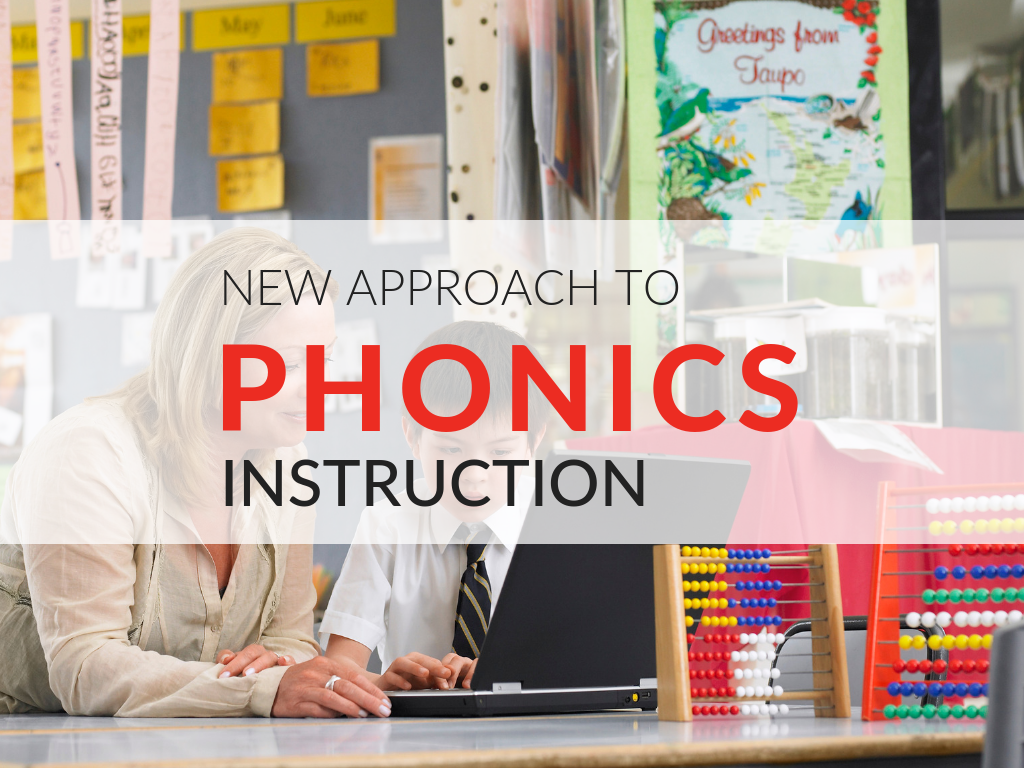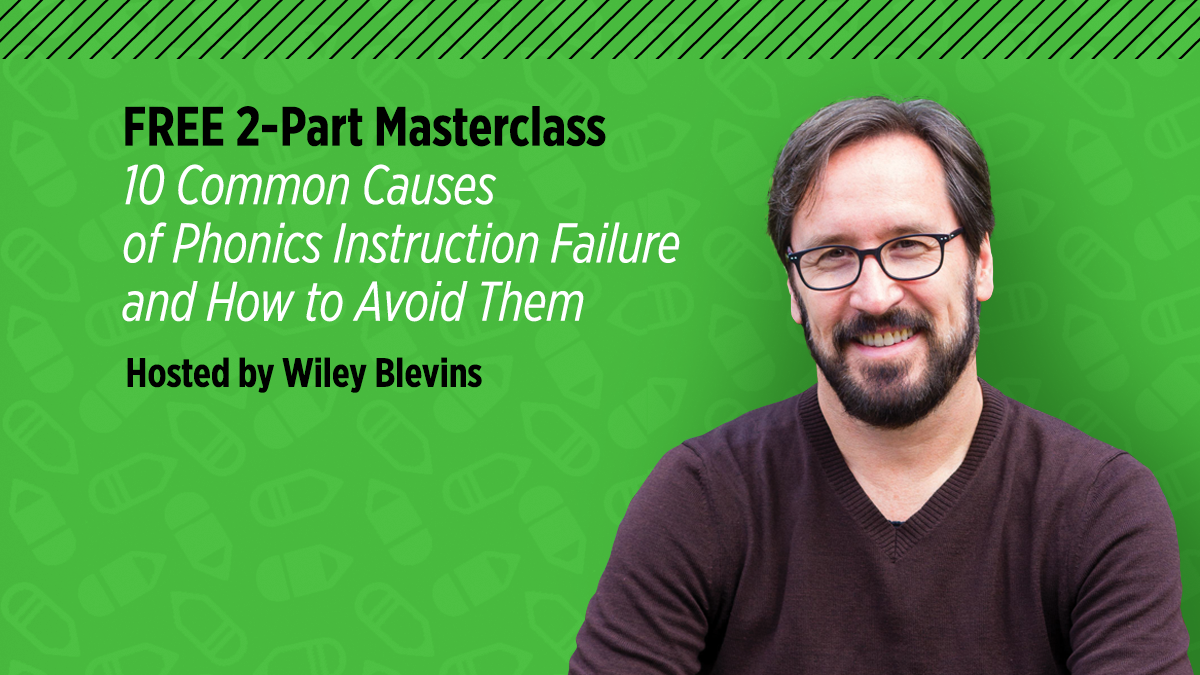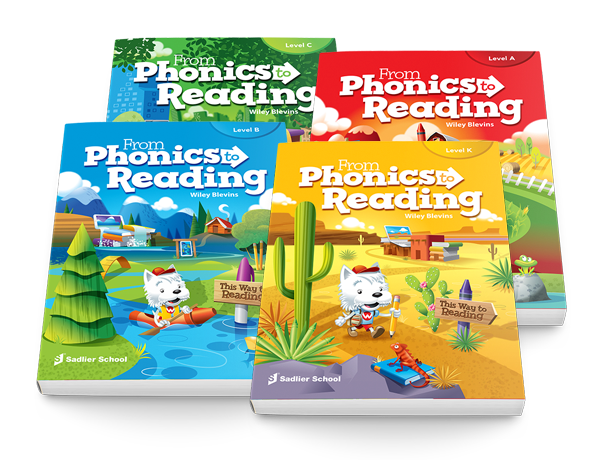August 11, 2025 ELA PD - Literacy, ELA K-5, ELA Focus - Reading, ELA PD - Leadership
Phonics Instruction Aligned to the Science of Reading from Literacy Expert, Wiley Blevins
By: Emily Niska
As teachers, we do pretty important work. We use our expertise and experience as tools to craft and deliver instruction to the next generation of thinkers. It’s vital, then, for teachers to constantly seek opportunities to expand our knowledge and hone our skills. Although avenues of professional development might be plentiful—in fact, there are many here at Sadlier—rarely do we get the opportunity to learn from the experts themselves! That’s why I’m so excited to tell you all about my experience in Wiley Blevins’s amazing Phonics Masterclass: 10 Common Causes of Phonics Instruction Failure and How to Avoid Them.

During the two-part class, I had the opportunity to hear Blevins speak about the mistakes educators make when teaching phonics. (Don’t worry, I’m guilty too!) I was also pleased to hear about Blevins’s incredible comprehensive phonics program, From Phonics to Reading, which uses a systematic approach to move teachers away from isolated skill work and towards meaningful application of phonics skills. In this article, you’ll read more about
- The phonics guru himself, Wiley Blevins
- Some of the common phonics instruction pitfalls I learned about in his masterclass
- How his program will change the way you implement your phonics and improve student success
Lessons From Literacy Expert Wiley Blevins
I learned from Wiley Blevins that there are ten main reasons that phonics instruction can be ineffective in improving student learning outcomes.
-
Inadequate or Non-Existent Review and Repetition Cycle
-
Lack of Application to Real Reading and Writing Experiences
-
Inappropriate Reading Materials to Practice Skills
-
Ineffective Use of the Gradual Release of Responsibility Model
-
Too Much Time Lost During Transition
-
Limited Teacher Knowledge of Research-Based Phonics Routines and Linguistics
-
Inappropriate Pacing of Lessons
-
No Comprehensive or Cumulative Mastery Assessment Tools
-
Transitioning to Multisyllabic Words Too Late
-
Overdoing It (Especially Isolated Skill Work)
An important (yet simple) thread linked all of Blevins’s points: teachers are mismanaging their phonics instruction time. They’re spending too much time instructing students in isolated skill work and in transitioning between activities, and they’re spending too little time letting students process, apply, and practice the information they’re learning.
One of the ideas that Wiley reiterated several times is that teachers spend way too much time “talking at” kids about isolated skills and way too little time prompting and listening. Teachers should be encouraging students to engage in their own rich conversation about how words work and how they are related. In short, we’ve got to let kids do the heavy lifting in terms of mentally piecing together how and why words work in certain ways.
Another way phonics instruction can fail is when teachers don’t provide ample opportunities for students to transfer their word knowledge to reading and writing. In order to make sure that the application feels authentic and not strange, teachers should find good decodable texts that allow students to practice their phonics skills in a genuine way.
In order to teach to “mastery and not just exposure”, Blevins mentions several times that teachers shouldn’t push students to do too much, too soon. Educators must plan lessons that give kids the opportunity to practice, review, practice again, and apply their phonics skills in an ongoing review and repetition cycle. The goal should not be “one and done.” It should be teaching and reteaching until the concepts are fully cemented in our students’ minds.
To learn even more, register for the On-Demand Phonics Masterclass!
Wiley has been at the heart of the national conversation around the Science of Reading. His program From Phonics to Reading is based on current research. Wiley wrote the International Literacy Association's Leadership Literacy Brief, Meeting the Challenges of Early Literacy Phonics Instruction (ILA, 2019)
A Peek At Wiley Blevins’s New Program: From Phonics To Reading
After hearing about the ten common causes of phonics instruction failure, I just knew I had it all wrong! At first I was overwhelmed at the thought of throwing away my old phonics program and starting from scratch by designing a new one that fits the bill. After I had about 10 mini panic attacks in a row, I discovered that Blevins has already done all the work for me (oh, thank heavens for Blevins!). In his new program, From Phonics to Reading, Blevins has crafted a comprehensive phonics program that, by its very design, makes the 10 common causes of phonics instruction failure obsolete.
I recently got to download a sneak peak of this new program (see below to learn more), and discovered that it solves the big “phonics instruction failures” dilemma right from the start by using an explicit, research-based phonics curriculum grounded in the Seven Characteristics of Phonics Instruction (readiness skills, sensible scope and sequence, blending, dictation, word awareness, high-frequency words, and reading connected text). As I flipped through the sample, I couldn’t believe that the program not only comes with an embedded review and repetition cycle, but it also provides for you the opportunities to apply and transfer phonics skills to authentic reading and writing tasks. No more spending hours hunting down my own accountable texts!! I can now spend all my time teaching phonics lessons instead of developing my own while trying to painstakingly avoid the common pitfalls.
Free eBook from Wiley Blevins
For an even deeper dive into effective phonics instruction, download Wiley Blevins’s free eBook, 10 Common Causes of Phonics Instruction Failure. In it, Wiley identifies the most common pitfalls that prevent students from mastering phonics and offers practical, research-based solutions you can apply right away. Whether you’re new to teaching phonics or looking to refine your approach, this resource will help you avoid missteps and maximize student success.
In Summary
What if I told you that teaching one single thing—letter sounds—means that you’d be giving your students access to 84% of written words? Thanks to Wiley Blevins’s new masterclass, I learned that fascinating fact, as well as ways to improve my phonics instruction by avoiding the most common pitfalls. After attending the 10 Common Causes of Phonics Instruction Failure Masterclass taught by expert and all-around phonics guru, Wiley Blevins, I feel excited and inspired to learn more about his new approach to phonics instruction.
Register for Wiley Blevins’s On-Demand Masterclass to learn even more!







